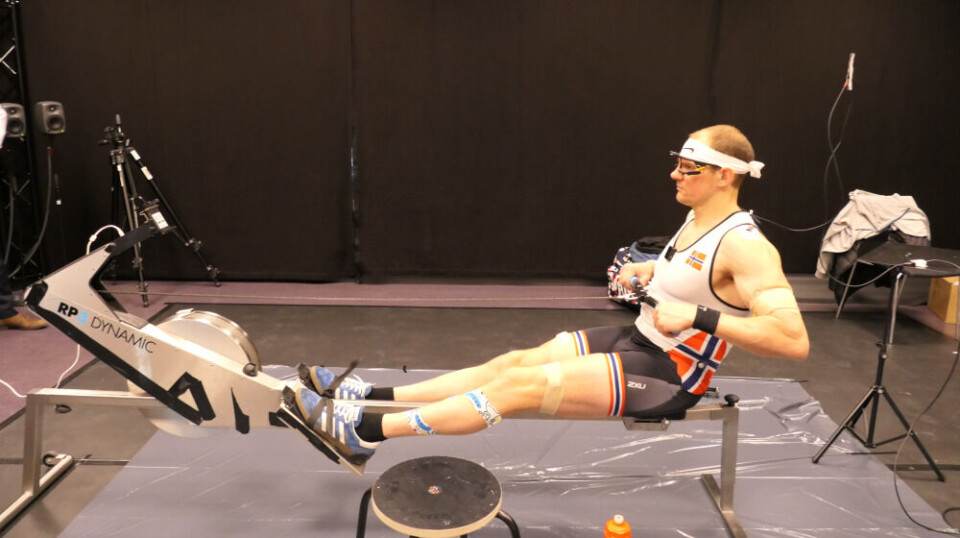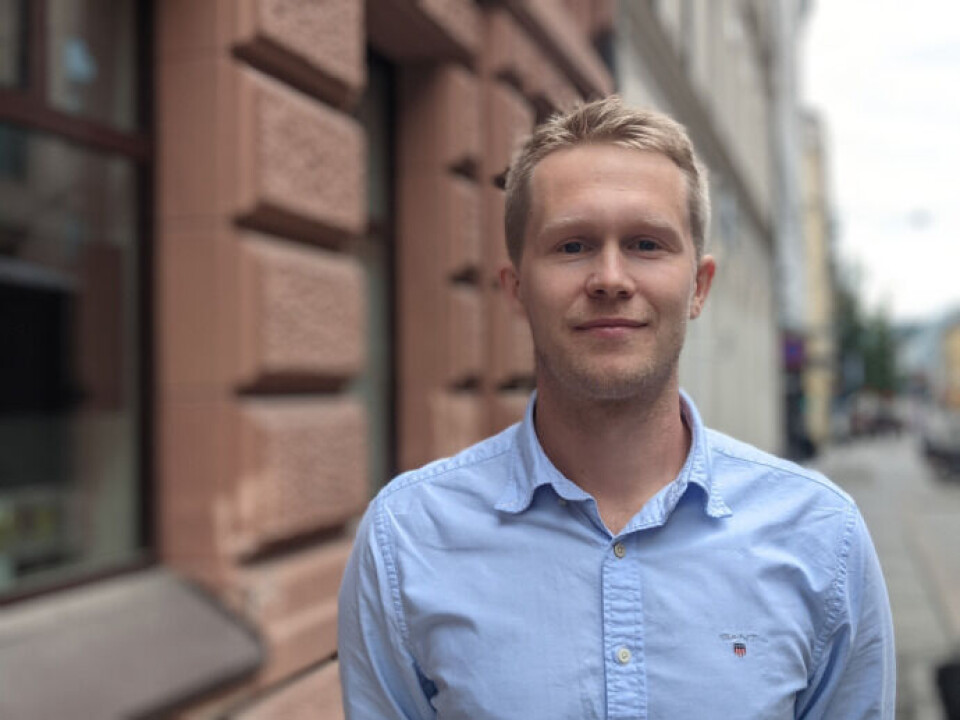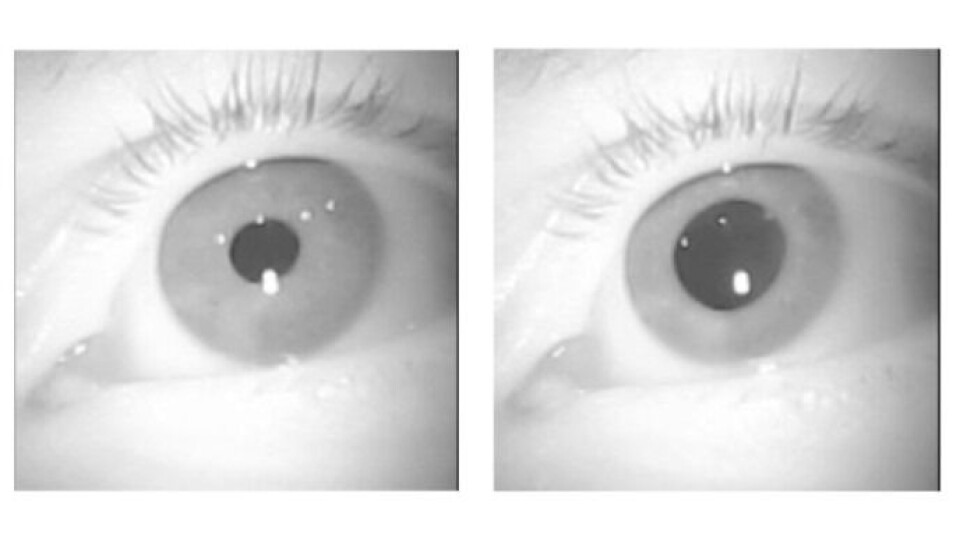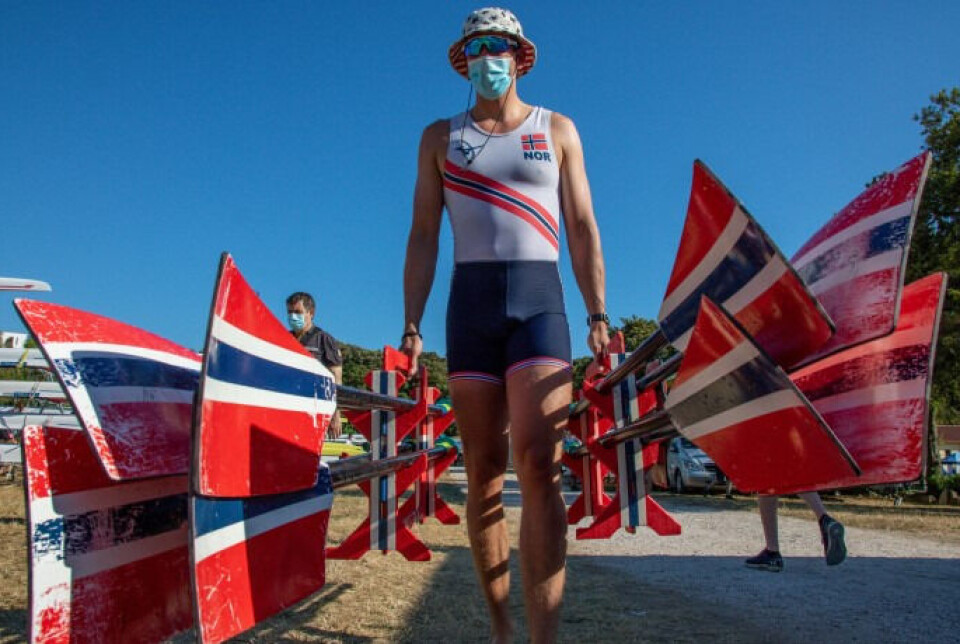THIS CONTENT IS BROUGHT TO YOU BY University of Oslo - read more

Are elite athletes like zombies who can perform on autopilot?
Sports and physical exercise require mental effort – even in elite athletes.
For a long time, it has been a common belief that when you are very good at something, your body performs almost automatically – you act almost like a zombie. Norwegian researcher Gunnar Breivik described this view in previous research.
Sports psychologist Henrik Herrebrøden also believed that automaticity was a key to success when he started his doctoral research journey in 2019.
“I may have put too much trust in athletes’ verbal statements. In several studies, athletes have claimed that they did not think about anything, or that they were relatively relaxed, while performing. On the one hand, this seems quite sensible and very pleasant. The problem is that it probably doesn't give a thorough and truthful picture of a typical sports performance,” Herrebrøden says.
He recently completed his PhD at the RITMO Centre for Interdisciplinary Studies in Rhythm, Time and Motion at the University of Oslo.
Herrebrøden investigated cognition and attentional processes in rowers.
“Ergometer rowing may not seem like an activity that requires attention. But it does!” he says.

Elites had the largest pupil dilations
Herrebrøden and colleagues tested 18 rowers in the lab: nine from the Norwegian national team and nine recreational rowers. All of them wore eye-tracking glasses measuring pupil size and blinking.
They used a rowing ergometer and were instructed to row with certain levels of speed, while a monitor told them how fast they were rowing.
“It's not easy to measure brain activity when a person is physically active, but our eyes can give us some hints,” Herrebrøde says.
For example, pupil size can say something about how intensively we are using our attention.
“When comparing the elites with those at a lower level, we saw that the elite rowers demonstrated significantly greater increase in pupil size. This surprised us,” he says.

The elite mind is not completely calm
Humans’ pupil size can vary between approximately 1.5 and 8 millimetres.
Increased pupil size may indicate increased activity in the cerebral cortex, the outer layer of the cerebrum, which is involved in thinking, interpretation of sensory impressions, planning, and execution of complex actions.
Herrebrøden himself used to play volleyball at the elite level.
“When we do something we are good at, and it goes well, it can feel as if the mind is completely calm – everything just flows. But in my PhD, I got to observe some of the world's best rowers while they performed well-known actions, and they seemed to use intensive attention just as much as rowers at lower levels,” he says.
Subjective versus objective effort
So, could it be that we make intensive use of our brainpower without noticing?
“It can happen! Sometimes we can become completely absorbed in what we do. The performance feels easy and pleasant, and we use a lot of mental effort without being consciously aware of it. We often use the term 'flow' to describe this experience, and flow usually occurs when we are challenged within the limits of our capacity,” Herrebrøden says.
However, the opposite phenomenon can also occur. Researchers saw this in a car racing simulation study. When driving conditions were very difficult, participants claimed to invest a lot of effort while physiological measurements indicated that they did not.
In sum, there is no one-to-one relationship between the effort we feel that we invest and the measurable, objective effort that we actually seem to invest.
Math problems led to declined rowing performance
During some of the trials, Herrebrøden wanted to give the participants a mental challenge. While rowing, they were presented with math problems through loudspeakers, for instance, 36 + 3 and 15 x 16.
They had 10 seconds to respond to each problem.
“We saw that the trials involving math problems led to pupil dilations, as has been demonstrated in previous research. In our study, we also saw that the dual tasking negatively affected the rowing performance,” he says.
While solving the math problems, the participants rowed with more variable speed levels and shorter stroke lengths, as compared to conditions without math problems.
“It seems like optimal sports performance requires attention. If you perform several attention-demanding tasks at the same time, your brain will look for shortcuts and prioritise. Our participants may have sacrificed precise speed control, as well as the long and beautiful strokes on the ergometer, in order to deal with the math problems while rowing,” Herrebrøden says.
Three minutes without blinking
Herrebrøden also investigated how many times the rowers blinked per trial.
“During single task rowing, with no math problems, the participants usually did not blink much. Some could row for three minutes without blinking! This could be a sign of intense concentration on what they were doing and the monitor in front of them,” he says.
The producers of the short film Blink of an Eye observed a similar finding in 2013, when filming the Norwegian alpine skier Aksel Lund Svindal.
He went downhill for two minutes – all the way to the bottom of the hill – without blinking. Normally humans blink approximately every third second.
When the rowers had to dual task, by rowing and solving math problems at the same time, the blink rates increased.
“A possible explanation is that the rowers had to 'shut the world out' for a moment and concentrate on calculations within their minds. One way to disconnect from the external world is to close your eyes, or blink more often,” Herrebrøden says.
Sport scientists have yet to uncover all that goes on inside the elite athlete’s mind.
“Overall, it seems like we come alive when we play sports. Our hearts beat faster, and our pupils get bigger," he says.

A cognitively demanding activity
Through conversations with elite athletes, Herrebrøden has realised that an elite sports performance is more cognitively demanding and nuanced than many people may think.
For an outside observer, rowing may seem fairly straightforward. Elite rowers, on the other hand, could talk for minutes about their thinking and strategies during a race.
“It might be comparable to wine tasting. If you have not tasted red wine before, most red wines may taste the same and you probably will not notice much nuance. For a wine connoisseur, on the other hand, each new red wine represents a world of different flavours, textures, smells, and so on. Likewise, a rowing stroke cycle may offer more details to an elite rower’s attention than a novice,” Herrebrøden suggests.
Whether or not this can explain the large pupil dilations found in Herrebrøden’s elite participants is not clear.
“I don't think the elite rowers would have spent mental effort on rowing if it did not help their performance. My best explanation is that the elites pay attention and process information, such as feedback from their bodies or contextual cues in the performance environment, in ways that make them more adaptable and effective. However, they may be so used to this attentive processing that they do not find it draining or particularly demanding,” he says.
References:
Breivik, G. 'Zombie-Like or Superconscious? A Phenomenological and Conceptual Analysis of Consciousness in Elite Sport', Journal of the Philosophy of Sport, vol. 40, 2013. DOI: 10.1080/00948705.2012.725890 (Abstract)
Harris et al. 'Is flow really effortless? The complex role of effortful attention', Sport, Exercise, and Performance Psychology, vol. 6, 2017. DOI: 10.1037/spy0000083 (Abstract)
Herrebrøden et al. Cognitive load causes kinematic changes in both elite and non-elite rowers, Human Movement Science, vol. 90, 2023. DOI: 10.1016/j.humov.2023.103113
Herrebrøden et al. Mental Effort in Elite and Nonelite Rowers, Journal of Sport and Exercise Psychology, vol. 45, 2023. DOI: 10.1123/jsep.2022-0164
Klingner et al. 'Effects of visual and verbal presentation on cognitive load in vigilance, memory, and arithmetic tasks', Psychophysiology, vol. 48, 2011. DOI: 10.1111/j.1469-8986.2010.01069.x (Abstract)

This content is paid for and presented by the University of Oslo
This content is created by the University of Oslo's communication staff, who use this platform to communicate science and share results from research with the public. The University of Oslo is one of more than 80 owners of ScienceNorway.no. Read more here.
More content from the University of Oslo:
-
Queer opera singers: “I was too feminine, too ‘gay.’ I heard that on opera stages in both Asia and Europe”
-
Putin’s dream of the perfect family
-
How international standards are transforming the world
-
A researcher has listened to 480 versions of Hitler's favourite music. This is what he found
-
Researcher: "AI weakens our judgement"
-
New, worrying trend among incels, according to researcher




































